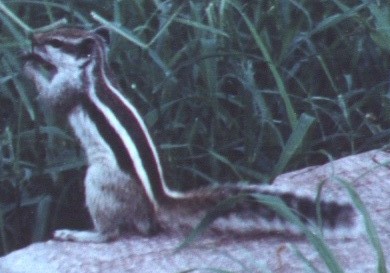
Squirrels |
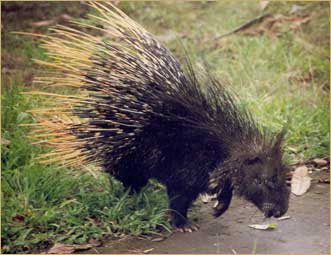
Porcupines |
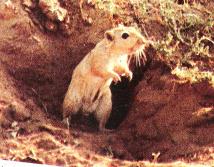
Gerbils |
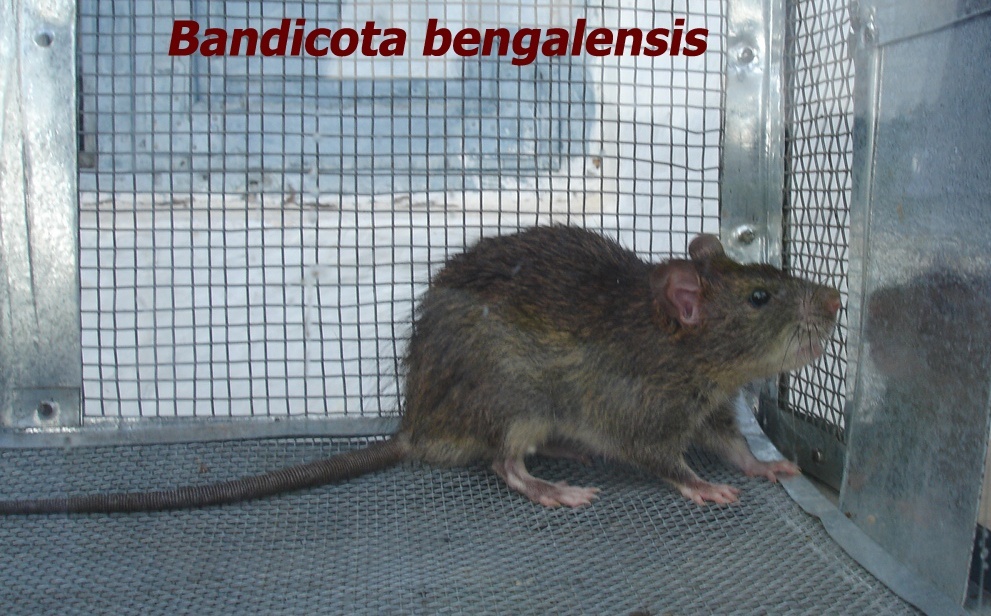
Bandicoots |
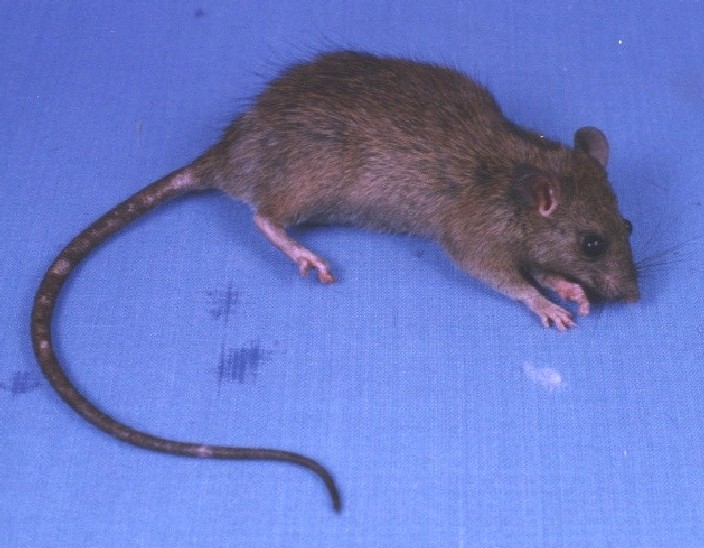
Rats |
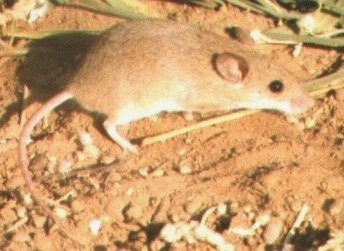
Mice |
उद्देश्य
- कृन्तकों की बनावट, जीव विज्ञान, पारिस्थितिकी और उससे फसलों को देश की विभिन्न कृषि जलवायुगत परिस्थितियों में हुए नुकसान का आधारभूत और रणनीतिगत अनुसंधान व अध्ययन।
- विभिन्न फसल पद्धतियों के अन्तर्गत एकीकृत कृन्तक नियन्त्रण प्रबन्धन विकास हेतु बहु-स्थानिक कृन्तक प्रबन्धन तकनीक का मूल्यांकन
- विभिन्न सामुदायिक केन्द्रो पर कृन्तक प्रबन्धन के विभिन्न शोध कार्यो में समन्वय करना।
- सामाजिक प्रक्रिया के अन्तर्गत कृषि विज्ञान केन्द्र और अन्य अभिकरणों के द्वारा किसानों के खेतो पर कृन्तक प्रबन्धन तकनीक का पुर्नसुधार एवं मूल्यांकन।
- कृन्तक प्रबन्धन के क्षेत्र में प्रशिक्षित मानव-शक्ति का क्रियात्मक प्रशिक्षण और प्रदर्शन द्वारा विकास और इससे सम्बन्धित शोध का प्रदर्शन।
- कृषि विश्वविद्यालयों में स्नातक/स्नातकोत्तर में कृन्तक प्रबन्धन को पाठ्यक्रम में शामिल करना। कृन्तक नियंत्रण/प्रबन्धन पर परामर्श और सलाह देना।
मिशन
“खाद्य और स्वास्थ्य सुरक्षा हेतु कृन्तक प्रबन्धन ”
Technical Programme
- Surveillance of pest rodents in predominant cropping systems.
- Monitoring of rodent abundance and damage in selected agro-climatic zones of the region.
- Evaluation of botanicals against rodent pests for anitfeedant /deterrent/ attractant effects.
- Evaluation of chemical compounds for toxic and anti-fertility properties on Indian rodents including toxicology of rodenticides.
- Development of rodent management technologies under storage conditions.
- Bio-ecology of major rodent species (Habit, habitat, food, feeding /burrowing behaviour, population dynamics, reproduction & Breeding Biology etc).
- Development/ Refinement of rodent pest management modules in predominant crops/cropping systems and other situations, like poultry farms, poly houses, plantation crops, pressurized irrigation orchards etc.
- Studies on potential of parasites/ predatory cues for bio control of rodent pests.
- Ecological takeover of rodents in relation to changing land use pattern in different agro-climatic zone of India.
- Social Engineering Activity on Rodent Pest Management as Participatory Adaptive Research in adopted villages.
संगठनात्मक संरचना
| S.No | Centre | Located at | ICAR/SAU |
| मुख्यालय समन्वयक इकाईः | केन्द्रीय शुष्क क्षेत्र अनुसंधान संस्थान, जोधपुर -342 003 (Rajasthan) | ICAR |
1 |
पंजाब कृषि विश्वविद्यालय, लुधियाना, पंजाब | प्राणीशास्त्र विभाग, पंजाब कृषि विश्वविद्यालय, लुधियाना-141004, पंजाब | SAU |
2 |
कृषि महाविद्यालय, कृषि विज्ञान विश्वविद्यालय, बैंगलोर, कर्नाटक | कृषि महाविद्यालय, कृषि विज्ञान विश्वविद्यालय, बैंगलोर 560 065, कर्नाटक। |
SAU |
3 | एन.जी. रंगा कृषि विश्वविद्यालय, मरूटेरू, आन्ध्रप्रदेश |
A.P. Rice Research Institute & Agricultural Research Station, Maruteru-534 122
West Godavari Distt (A.P.) | SAU |
4 | आसाम कृषि विश्वविद्यालय, जोरहट, आसाम |
Dept. of Entomology, Assam Agricultural University, Jorhat-785 013 (Assam)
| SAU |
5 |
केन्द्रीय उपमहाद्वीप कृषि अनुसंधान संस्थान, पोर्ट ब्लेयर |
Division of Field Crops
Central Island Agricultural Research Institute, PB No-181, Portblair-744 101 (A&N Islands) | ICAR |
6 | केन्द्रीय कृषि विश्वविद्यालय, इम्फाल, मणिपुर |
DCollege of Horticulture & Forestry, Central Agriculture University, Passighat-791 102 (Arunachal Pradesh) | Central University (ICAR) |
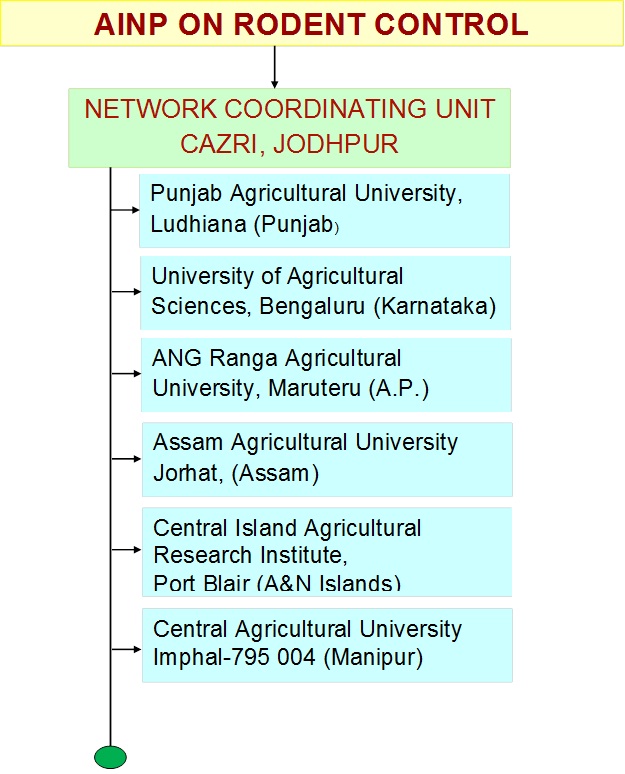
CONTACT PERSONS
| Centres |
Name |
Designation |
Address |
| Jodhpur |
Dr. R.S. Tripathi |
Project coordinator | AINP on Rodent Control,
Central Arid zone Research
Institute, Jodhpur-342 003
Phone: 0291-2786689
E-mail: rstripathi@cazri.res.in
Fax: 0291-2786689; 0291-2788706 |
| Dr. Vipin Chaudhary | Senior Scientist | AINP on Rodent Control
Central Arid zone Research Institute
Jodhpur-342 003 (Rajasthan)
Phone: 0291-2786689
Fax: 0291-2788706
E-mail: vipin_cima @ yahoo.com
|
| Ludhiana |
Dr. (Ms) Neena Singla |
Principal Investigator |
Zoologist, AINP on Rodent Control, Dept. of Zoology Punjab Agricultural University, Ludhiana-141 004 (Punjab)
Phone: 0161 -2401960 Fax: 0161- 2400945;
E mail: neenasingla@gmail.com
|
| Dr. (Mrs) Bhupinder Kaur Babbar |
Astt. Zoologist (Rodents) |
Assistant Zoologist (Rodent Control) Dept. of Zoology, Punjab Agricultural University, Ludhiana-141 004 (Punjab)
Phone:0161-2401794
E mail: babbar11universitypau@gmail.com bhupinder@pau.edu
|
| Dr. Rajwinder Singh |
Astt. Zoologist (Rodents) |
Assistant Zoologist (Rodent Control) Dept. of Zoology, Punjab Agricultural University, Ludhiana-141 004 (Punjab)
Phone:0161-2401794
E mail: rajwinder-singh @pau.edu
|
| Dr. Navdeep Kaur |
Astt. Zoologist (Rodents) |
Assistant Zoologist (Rodent Control) Dept. of Zoology, Punjab Agricultural University, Ludhiana-141 004 (Punjab)
Phone:0161-2401794
E mail: navdeepkaur.pau@gmail.com
|
| Banglore |
Dr. V. Shivayya |
Principal Investigator |
Professor & Head AINP on Rodent Control, College of Agriculture, University of Agril. Sciences, GKVK, Bangalore- 560 065 (Karnataka)
Phone:080-23330153 Fax: 080-23330277
E mail: shivayyav@rediffmail.com
|
| Dr. Mohan I. Naik |
Professor |
Professor, AINP on Rodent Control, College of Agriculture, University of Agril. Sciences, GKVK, Bangalore- 560 065
Phone:080-3330153 Fax: 080-3330277
E mail: mohanishwarnaik@yahoo.in
/td>
|
| Maruteru |
Dr. Ch. V. Narsimha Rao |
Principal Investigator |
Pr. Scientist (Rodent Control) Agril. Research Station (ANGRAU), Maruteru (West Godavari)-534 122 Phone: 08819-246283 "E: mail: raghavapr@yahoo.com 08819-246583 |
| Dr. B. Anusha |
Scientist |
Scientist, AINP on Rodent Control, APRRI & Regional Agricultural Research Station (ANGRAU), Maruteru-534 122
West Godavari Distt (A.P)
Phone: 08819-246283; Fax: 08819-246583
E mail: nandu_suneeta@yahoo.co.in
|
| Jorhat |
Dr. B.C. Dutta |
Principal Investigator |
Sr.Scientist Dept. of Entomology, Agricultural University, Jorhat (Assam)
Phone : 0376-3340044 Fax: 0376-3320919
E mail: borahratul09@gmail.com
|
| Dr. R. K. Borah |
Assistant Professor |
Scientist Dept. of Entomology, Agricultural University, Jorhat (Assam) Phone: 0376-3320965 Fax 0376-3320919
E mail: baruahmayuri634@gmail.com
|
| Pasighat |
Dr. M.M. Kumawat |
Principal Investigator |
Deptt of Entomology, College of Horticulture & Forestry, Central Agricultural University, Pasighat- 791 102 (Arunachal Pradesh)
Phone: 0368-2224887 Fax:0368-2225066
Mobile: 09436200375
E mail:kumawatmm@gmail.com |
| Dr. K. M. Singh |
Co-Principal Investigator |
Deptt of Entomology, College of Horticulture & Forestry, Central Agricultural University, Pasighat-791 102 (Arunachal Pradesh)
Phone: 0368-2224887 Fax:0368-2225066
|
Port Blair |
Dr. T. Bharathi Meena |
Principal Investigator |
Scientist, Division of Field crops, Central Island Agricultural Research Institute
PB No 181,Port Blair-744 101(A&N Islands)
Phone: 03192-250238; Fax: 03192-251068
Mobile: 09933212134
E mail: bharathymina @gmail.com |
RESEARCH ACHIEVEMENTS
- Lesser bandicoot rat, Bandicota bengalensis was the most predominant rodent pest species infesting various cropping systems in all the major agro-ecological regions of the country. In Himachal Pradesh too, B. bengalensis was found to predominantly inhabit all the agro-climatic zones up to 2500 MSL. In Eastern and Southern dry zones of Karnataka, North-western arid zone of Gujarat and Western Punjab, Tatera indica was the predominant pest species. Indian desert gerbil, Meriones hurrianae occupied the predominant position in rain fed crops, grass lands, forestry plantations etc in Western Rajasthan. Similarly Rattus rattus wroughtoni proved to be a serious threat to coconut and other plantation crops in Andhra Pradesh, Kerala and Karnataka. A species complex of B. bengalensis- Rattus meltada/ T. indica -Mus booduga was the most common rodent pest composition in the irrigated cropping system of the country.
- Four species viz., Niviventer niviventer, N. fluvescens, Rattus sikkimensis and R .nitidus were identified as problem species showing upsurge in their population synchronizing with bamboo flowering in NEH region. Two squirrel species, Calloscirrus spand Dremnomys lokriah were reported to be major problem species in fruit crops in Assam. Monitoring of rodent problem in NEH revealed population upsurge in parts of Manipur and Assam in 2003-04 and in Arunachal Pradesh in 2004-05 due to mass flowering of bamboos.
- Four new rodent species viz., Little Mus booduga, Rattus tanezumi andamanensis, Cremnomys cutchicus and Bandicota bengalensis reported from Andaman and Nicobar islands for the first time. Bandicota bengalensis also reported to spread in newer biomes like arid zones and far NEH regions. Effect of land use changes and urbanization showed replacement of xeric fauna in arid regions.
- Studies on population ecology and biology of B. bengalensis in arid zone showed peak breeding during monsoon with a litter size of 6-8. In Godavari delta region the species showed a seasonal productivity up to 70.4 (kharif) and 30.3/female (rabi) in rice fields. The bandicoots bred 3-4 time in a crop season.
Crop damage data in different agro-ecological regions revealed that rice, wheat, sugarcane and ground nut are most vulnerable crops. During 2010-11 these crops suffered 5-15% damage. The plantation crops Coconut (5-8% in Andamans), Pine apple (7-9% in NEH) and cardamom (1.5-12% in Karnataka) also suffered heavily due to rodent depredation. Rodent problem in poly houses and drip pipes were assessed.
- Neem leaf powder, papaya seeds, castor oil, eucalyptus oil, Pongomia oil, Vitex nuigendi leaf powder, Calotropis latex showed anti rodent properties in feeding trials. Gossypol from crude cotton seed oil, papaya seed powder, root powder of Calotropis etc have shown anti fertility actions of varying degrees. Glucosides of Trypterigium wilfordii also possess male sterilant effects on Rattus rattus. Similarly eucalyptus oil and mint oil have registered repellent actions against commensal rodents.
- Jojoba seed cake powder (10-20%) recorded a repellency index of up to 90% in Tatera indica.
Studies on rodent management in poultry farms were concluded and the significant recommendations of this Project were brought out in form of a Technology Bulletin entitled “Rodent Management in Poultry Farms" for the benefit of poultry farmers.
- Male urine was found to possess sex pheromonal properties as it was reported to accelerate puberty in females. Vaginal opening was advanced for three weeks. Addition of fresh burrow sand in baits increases the bait acceptance and consumption in bandicoots indicating that urinary pheromones are involved in intra specific communication.
- Alpha-chlorohydrin, a toxicant cum-male sterilant recorded an LD50 of 82 mg/kg for B. bengalensis. The dead rats were observed to indicate reduced male organs (testes, epididymis) and aspermia in epididymal fluid. The compound showed its good promise as a follow up treatment in sugarcane fields infested by bandicoots. A germ cell mutagen, ethyl methane sulphonate, was reported to cause dose dependant sperm abnormalities in lesser bandicoots and house rats. Similarly epi-chlorohydrin @ 50-100 mg/kg proved an effective male sterilant for lesser bandicoots.
- Imidazole 5% baiting for 5 days showed sterilant effects on Tatera indica. Similarly Triptolide with LD50 of 181 mg/kg also registered anti fertility effects.
- Laboratory and field evaluation of Cholecalciferol, brodifacoum alluminium phosphide were undertaken.
- IRPM Module for Rice: For Karnataka: Bund management +weed control + zinc phosphide baiting (tillering and maturity stage) and For A.P: Cultural practices+ bromadiolone baiting + burrow smoking with fumigator. PVC bait stations @ 15-20/ha proved effective.
- Rodent proofing (rat guards) of indigenous storage structures in NEH region developed.
- In NEH Region four rodent species related to bamboo flowering related out breaks identified. Rodent management involving local bamboo traps (vaithang) and safer rodenticide (bromadiolone) baitings in bamboo made bait stations (two types fabricated) recommended. Many capacity building activities undertaken leading to reduced rodent damage in problem areas.
- Technical support provided to DAC sponsored National Plan on Rodent Pest Management. Curricula for UG/PG/Trainer farmers and capacity building activities undertaken.
- Consultancy and advisory services to manufactures of rodenticides and telecom cable/duct, drip pipes etc was rendered.
- Farmers’ participatory adaptive research was continued at all centres under social engineering activity on rodent control. Under the programme 2-3 villages were adopted and the rodent management technology was demonstrated and transferred to the farmers. The project has been successful in creating awareness in farmers about rodent problem and its management in the adopted villages with a rodent control success ranging between 50-60%.
- Rodent Management in NEH: Two pronged Action Plans (i) for researchers and (ii) for extension personnels developed during Special Regional Workshop in Mizoram during 2006 was followed by most of NE States. AINP has actively collaborated with NIPHM, Hyderabad in imparting trainings on Rodent Management in NEH Region. Timely Interventions of ICAR (AINP on Rodent Control) and DAC, the rodent problem in the region was contained to a greater extent. The situation was not as devastating as reported in earlier years. Human resource development activities undertaken by NE states at our initiatives have created immense awareness among extension functionaries and farming community.
Dissemination of information on research and human resource development
- Regular On and Off Campus Trainings on Rodent Control were organized by all centers by the Project as well as in association with KVKs, State Departments & other organizations.
- Apex Level Trainers Trainings on Rodent Control were regularly organized at ANGRAU, Maruteru centre besides collaborating with NIPHM, Hyderabad in such trainings organized at Hyderabad.
- Technical Bulletins published and publication of “Rodent Newsletter’ was continued.
- Under National Plan on Rodent Pest Management (sponsored by DAC) AINP on Rodent Control collaborated in (i) Sensitization workshops (ii) Curriculum development workshops and (iii) State Level Trainings for scientists and extension functionaries in A.P., Karnataka, Kerala, Assam and Bihar (iv) 21 days trainings on Vertebrate Pest management at NIPHM, Hyderabad.
- AINP on Rodent Control organized 02 Meeting of Expert Committee on Rodent Control. Group Meetings of the Project organized every alternate year.
RECOMMENDATION FOR FARMERS
- Groundnut: Double baiting with rodenticides viz., zinc phosphide (2.0%) followed by bromadiolone (0.005%) or vice versa. First baiting at pod formation stage and second at pod maturity stage. The baiting be done @ 10g poison bait per bait point and 100 bait points/ha covering the damage and rodent activity sites. Both these treatments also reduce rodent infestation in surrounding rice crop. Weeds and grasses should also be removed before poison baiting.
- Lean Periods: Targeted poison baiting with zinc phosphide (2.0%) in the active burrows in the month of May-June be taken up in wastelands/ floor of orchards and rodent runways. After this single poison baiting along with shallow ploughing and removal of weeds in standing crops during August (in kharif) and during February ( in rabi) is also recommended for effective management of rodents in crop fields.
- Cropping system based recommendations: Poison baiting in sugarcane crops in December-January protects sugarcane crop as well as surrounding wheat crop from rodent damage. In Punjab, rodent damage to rice field is more where it is transplanted near maize crop. Poison baiting with freshly prepared baits of bromadiolone (0.005%) or zinc phosphide (2.0%) in maize crop along with weed control in maize and rice fields should be done during September month at 100 bait points/ha (@ 10g bait/point). It prevents rodent damage to maize and surrounding rice crop.
- Cumin: Fresh poisonbaits of bromadiolone to be prepared in groundnut oil smeared pearl millet grains (960g pearl millet + 20g oil + 20g bromadioloneconc .for one kg bait) are to be applied in live rodent burrows. Two treatments, one at vegetative growth stage and repeat the same at flowering stage of cumin is recommended in cumin crop – in arid zone
- Rice and ragi: For effective poison bait delivery to target pests, packetting of baits in paper @ 10-15g /packet and inserting it deep inside the live burrows is more effective than loose baits in rice and ragi fields. Zinc phosphide (2.0%) baiting in burrows at seedling stage in ragi and at seedling and pre-harvest stage in rice is recommended.
- Sugarcane crop in Punjab, multiple rodenticide treatments are recommended at different stages of the crop vis a vis surrounding crop fields. First rodenticidal treatments should be conducted in the month of July (after paddy transplantation in surrounding fields) and second in the month of October (after paddy harvest in the surrounding fields). During each of these treatments, two rodenticide baitings (first with 2% zinc phosphide or 0.005% bromadiolone bait followed by second baiting with 0.005% bromadiolone bait after 15 days @ 1Kg/ha each) should be conducted. To save the sugarcane crop with delayed harvesting from rodent damage, a third rodenticide treatment should be conducted in the months of December-January with single application of 2% zinc phosphide or 0.005% bromadiolone bait @ 2Kg/ha each.
- Coconut: Trunk banding, cleaning of crowns and bromadiolone baiting in crowns has been recommended.
- A Small compact burrow fumigator was designed and developed by AICRP. It involves burning of farm wastes like paddy straw, weeds etc for smoke generation. The smoke is pumped into rodent burrows with the help of a blower. The unit has proved very effective in managing field rodents.
BULLETINS/ MONOGRAPHS PUBLISHED
- Based on the studies conducted on various aspects of rodent pest ecology and management, the technical Bulletins/ Monographs published by the Project are listed below
- Ecology of Indian Desert Gerbil, Meriones hurrianae (1981). Central Arid Zone Research Institute, Jodhpur. 87p.
- Evaluation of Second Generation Anticoagulant Rodenticides in India I. Bromadiolone. (1986) Central Arid Zone Research Institute, Jodhpur. 20p.
- Evaluation of Second Generation Anticoagulant Rodenticides in India II. Brodifacoum. (1988) Central Arid Zone Research Institute, Jodhpur. 27p.
- Social Engineering Activity on Rodent Control: A Case Study. (1988) Central Arid Zone Research Institute, Jodhpur. 17p.
- Chooha Prabandh: Eak Awasyakta, Kyon aur Kaise . (1988) Central Arid Zone Research Institute, Jodhpur. 24p.
- Major Rodent Pest of Agriculture: An Illustrated Guide. (1988) Central Arid Zone Research Institute, Jodhpur 14p.
- Rodent Management: The State of Art. (1993) Central Arid Zone Research Institute, Jodhpur. 34p.
- Fifteen Years of Coordinated Research on Rodent Control (1994) Central Arid Zone Research Institute, Jodhpur. 144p.
- Rodents and other Vertebrate Pest Management in Coconut and Cocoa. (1995) Central Plantation Crops Research Institute, Kasaragod. 15p.
- Rodent Pests and their Management in North Eastern Hill Region. (1995) ICAR Research Complex for NEH Region, Barapani. 35p.
- Recent Advances in Coordinated Research on Rodent Control (1999). Central Arid Zone Research Institute, Jodhpur. 48 p
- Quarter Century of Research on Rodent Control in UAS, Bangalore. University of Agricultural Sciences, Bangalore. 126 p.
- Rodent Management in Poultry Farms (1999), AINP on Rodent Control, Central Arid Zone Research Institute, Jodhpur. 11p.
- Glimpses of Rodent Research in India (2002), AINP on Rodent Control. Central Arid Zone Research Institute, Jodhpur. 57p.
- Shushk Kshetron Mein Chooha Niyantran (2005), AINP on Rodent Control, Central Arid Zone Research Institute, Jodhpur. 16p.
- Distribution of Rodents in Indian Agriculture (2005), AINP on Rodent Contro,l Central Arid Zone Research Institute, Jodhpur. 136p.
- Rodent Pest Management in Northeast India (2006), AINP on Rodent Control, Central arid Zone Research Institute, Jodhpur. 28p.
- The Lesser Bandicoot Rat, Bandicota bengalensis, Gray and Hardwicke 1833 (2007), AINP on Rodent Control, Central arid Zone Research Institute, Jodhpur. 32p.
- Larger Bandicoot Rat, Bandicota indica (Bechstein). (2010), AINP on Rodent Control, Central arid Zone Research Institute, Jodhpur. 39p.
- Rodents and their Management in Andaman and Nicobar Islands. (2010), AINP on Rodent Control and Central Agricultural Research Institute, Port Blair. 12p.
- Rodent Pest Management: Dantiwada Experience (2011), AINP on Rodent Control, Central Arid Zone Research Institute, Jodhpur. 18pp.
- Porcupine: the Robust Rodent (2013), AINP on Rodent Control, Central Arid Zone Research Institute, Jodhpur. 39 p.
- Recent Advances in Rodent Research in Punjab (2013), AINP on Rodent Control, Central Arid Zone Research Institute, Jodhpur. 56 p.
The AICRP on Rodent Control brings out a quarterly “RODENT NEWSLETTER" which is being published by the Project since 1977.








